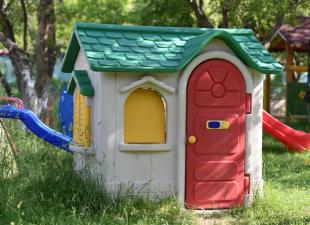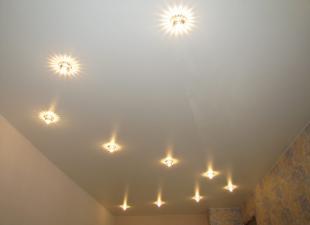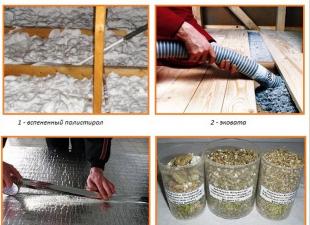Condensation in the piping is common. In this regard, it is worthwhile to figure out what such a situation could threaten. If you think that a fogged pipe only makes your home unattractive, then you are seriously mistaken. There may be certain problems that require urgent attention to eliminate the likelihood of more serious problems occurring. In any case, you should understand what is the reason for this situation and how to solve it.
Mostly fogging is observed on cold water pipes, which also applies to adjacent plumbing fixtures. Significantly less often, drops appear on the surface of cylindrical products for drainage of sewage. Condensation is completely absent on heating and hot water pipelines.
The appearance of moisture on pipes in an apartment is similar to how dew forms on grass. The air in the room is usually warm, and the cylindrical structures are cold, therefore, when one touches the other, moisture falls out of the air, which is condensation. For this to be realized in practice, it is necessary to have certain conditions: temperature difference and a specific humidity parameter.
Moisture can form when the so-called dew point is reached, when the surface temperature reaches its maximum values. More detailed information on this matter can be obtained through a special table.
So, at an air temperature of 22 ° C and a humidity parameter of 70%, condensation on pipes appears if the surface temperature differs from the corresponding value of the environment by 6 ° C, that is, it is 16 ° C. If the temperature exceeds the mentioned value, condensation will not occur.

Drops are formed mainly in the cold season if the liquid is taken from open sources, for example, from rivers, since the water in them is characterized by a large temperature difference depending on the season: about 5 ° C in winter and about 14 ° C in summer. If the liquid enters the pipe system from an artesian well, such a dependence is not traced, however, this fact leads to the fact that the formation of condensate is possible in the summer.
The so-called fogging of pipes provokes their rapid wear due to the appearance of rust. The formation of moisture on cylindrical structures contributes to the development of mold and mildew, leads to damage to the decoration of the room and flooding of neighbors from below, if the amount of condensate becomes prohibitive.
What else contributes to the appearance of moisture on pipes

Remedies
Condensation is not a problem per se. It is easy to get rid of it by understanding the causes of this trouble. The temperature difference causes the formation of moisture on the surface of the pipeline, therefore, it is necessary to install a barrier between cold products and humid air in the room. Thermal insulation is used to achieve this goal.
It is preferable to use foamed polyethylene as a heat-insulating material with the following properties:
- does not rot;
- does not absorb moisture;
- it has high thermal insulation characteristics.
It is recommended to use polyethylene foam presented in the form of a tube. This type of product is convenient in terms of use, since its inner diameter is related to the section of standard plumbing cylindrical products.
The optimal solution is to place the heat-insulating tube even during the installation of the water supply system. In this case, the best tightness is provided, but this is rarely possible.
Basically, it is necessary to isolate the already mounted structure, which is done by cutting a polyethylene foam tube along the length and putting it on cylindrical products, followed by fastening with plastic ties or sanitary tape.
To ensure tightness, due attention must be paid to the top and bottom of the chimney, as otherwise you can get the effect that is inherent in the chimney. If it is not possible to get to some parts of the water supply system, it is recommended to use polyurethane foam.
What materials are suitable for removing condensate
In addition to polyethylene foam, as mentioned above, the use of polyurethane foam is available. But also for these purposes, a corrugation with a larger diameter in comparison with the pipe, in relation to which work is being carried out to prevent the formation of condensation, is quite suitable. To put this into practice, you will need to cut the material into appropriate parts and wrap the pipes with them, filling the annular space with mounting foam.
Condensation in the bathroom
Having found a riser leak, you should contact your neighbors: perhaps they have problems with plumbing in their apartment. If moisture has formed on a pipe that is connected to a bathtub or sink, then the first step is to check the serviceability of the mixers, while it is advisable to isolate the pipes. Poor ventilation can also lead to condensation in the bathroom, so you need to make sure that it is working properly.
You can also resort to using special chemicals in the form of the same "Graphoterm". It will be possible to get rid of condensation if dry structures are rubbed with this substance. However, it is worth noting that the resulting effect will be temporary.

Condensate on the gas pipe
A cylindrical product coming from a gas boiler always has traces of drops. It will not be possible to completely get rid of this phenomenon, however, it is possible to significantly reduce the amount of moisture on the pipe walls. This is achieved by insulating the structure, focusing on its upper part, which reduces the cooling rate.
To prevent condensation from forming inside the product, it is advisable to use sandwich-type pipes, in which the outer walls act as a thermal insulation barrier.

Condensation in the toilet
Misting can also occur on toilet pipes due to the appearance of steam in the air or temperature changes. The settling of water droplets on cylindrical products is a problem that may be due to insufficient ventilation. To understand how this statement is true, you should open the toilet door and leave it in this position overnight. If the pipes dry out by morning, it means that the duct is not doing its job.
Another reason for moisture condensation may well lie in a tank malfunction. Its flow leads to a continuous flow of cold liquid into the sewer drain pipe, which explains the formation of moisture on its surface. This can be avoided by restoring the normal functioning of the tank outlet valve.

Why a wet pipe is dangerous
Condensation on cylindrical structures helps to reduce the life of the pipeline, since such an environment provokes metal corrosion. High humidity in the room is not only the smell of dampness, but also the appearance of fungi and mold, which can adversely affect the health of residents. Finally, abundant condensation causes serious leaks and puddles, and this inevitably brings the repair time closer, which implies an unplanned expense of funds.
 parlini.ru Repair of an apartment, a summer residence and a house.
parlini.ru Repair of an apartment, a summer residence and a house.


